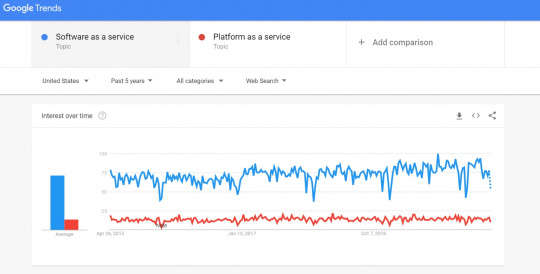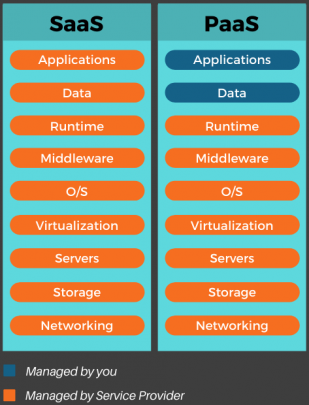Being aware of the newest and most efficient ways of organizing and managing everyday life can be the difference between success and failure.
Currently, there is three main cloud hosting models in the market: IaaS, PaaS, and SaaS. Each of these solutions meets the specific needs of its users.
Earlier we compared IaaS and SaaS. Now, it’s about time to shed some light on the comparison of SaaS and PaaS.
This article will help you better understand the differences between these two solutions and their respective advantages.

SaaS vs. PaaS: On the Basis of their Definition, Use & More
With SaaS solutions, users can connect to their applications using only their web browser. You do not have to download or install any type of installation or the operating system, the software is simply available for you to access and operate it.
In addition, the maintenance and updates of the applications will be managed externally by the service provider, which provides the solution and you will only have to pay for your use.
Key advantages of SaaS:
- The applications are updated automatically.
- Subscription according to consumption.
- Mobility of use.
- Data is synchronized between your devices plus it is accessible anywhere and anytime.
- Access to on-demand features.
Top examples of SaaS providers include:
- Google Apps
- Cisco WebEx
- Citrix GoToMeeting
- Dropbox
SaaS solutions can be a highly engaging option for small-medium enterprises that wish to carry out their digital transformation while avoiding the download and installation of different software on each computer.
Employers offering their employees a telework option can take advantage of all the benefits of this service model.
SaaS comes into the picture when you want to do away with holding up staff for handling the maintenance of software.
Also, when your business doesn’t want to partake in owning up to the software with a huge chunk of the amount.
PaaS is aimed at professionals and in particular at developers since it offers the possibility of keeping control over the installation and development of the applications running via a cloud environment.
This configuration is also appreciated for hosting a website without having to manage the system layers.
PaaS provides you with computer platforms that typically include the operating system, the programming language execution environment, the database, and the webserver.
Key advantages of PaaS:
- Save time and flexibility for development projects.
- Maintain perfect control of its deployed applications.
- Makes it possible to manage the development and hosting of the infrastructure.
- Web services and databases are integrated.
Top examples of SaaS providers include:
- AWS Elastic Beanstalk
- Google Apps Engine
- IBM Bluemix
- OpenShift
PaaS solutions are aimed at a much smaller audience. They help developers to create their applications in a much easier, efficient and economical way.
It allows you to deploy your machine, install an OS on it, and set up your applications in a few minutes.
When there are needs of developers from different companies working simultaneously. Teamwork, integration with other applications, integration with database along with when you need to reduce TCO.
PaaS is most often based on an IaaS platform in order to reduce the need for system administration. This allows you to focus on application development rather than infrastructure management.
With PaaS, the environment is prepared for the client to develop, run, and manage applications without having to worry about the management of the operating system.
Whereas in SaaS, the customer only uses the software via the internet, and the provider is responsible for managing the infrastructure and platform.
It offers ready-to-use solutions that meet a specific business need. Most modern SaaS platforms are built on IaaS or PaaS platforms.

You may also like to read:




